By Eric Vandenbroeck and co-workers
When humanity almost got
wiped out
According
to The New York
Times, scientists studying a site in North Dakota
believe they have discovered pieces of an asteroid that slammed into Earth about
66 million years ago off the Yucatán Peninsula. It's believed the object caused
widespread destruction and led to the eventual extinction of the dinosaurs,
which paved the way for mammals to rule the planet.
The asteroid created a 20-mile-deep crater that sent molten debris into
the air that later cooled into "spherules of glass," the newspaper
explained. Experts say these objects are unmistakable signs that an asteroid
impact occurred.
And whether we go with Hobbes or
Rousseau, we are left with the idea that the most we can do to change our
current predicament is a bit of modest political tinkering. Hierarchy and
inequality are the inevitable prices to pay for having genuinely come of age,
yet except what the available evidence shows are that the trajectory of
human history has been a good deal more diverse and exciting and less boring
than we tend to assume because, in an important sense, it has not been a trajectory.
Most people who write history on a grand scale seem to have decided
that, as a species, we are well and truly stuck, and there is really no escape
from the institutional cages we’ve made for ourselves1.
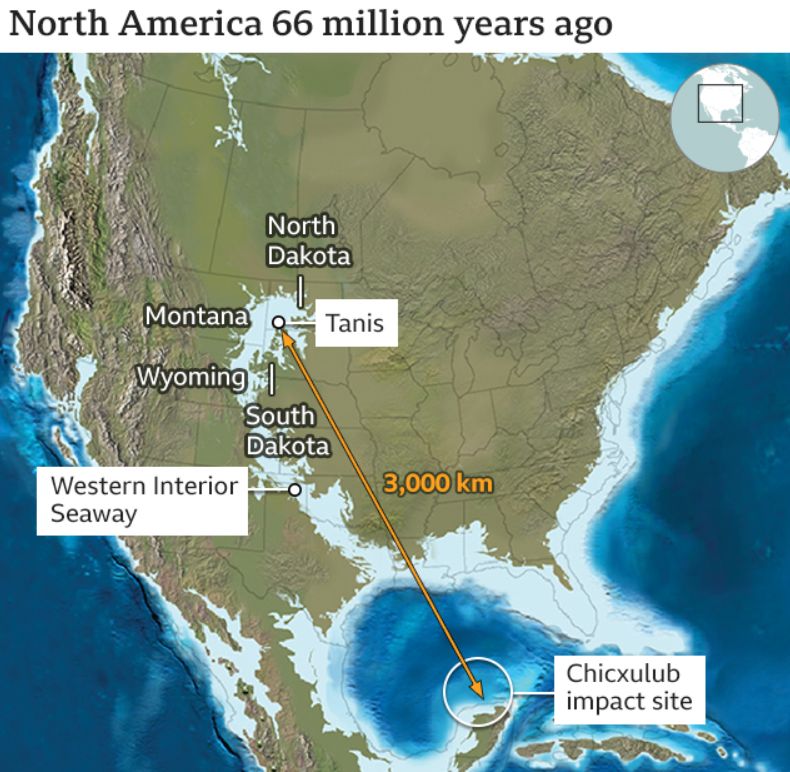
Little discussed is that during the Cretaceous Period, a comet six
miles wide, taller than Mount Everest, and traveling at a hundred times the
speed of a jet plane targeted the earth.2
Some 66 million years ago, a six-mile wide asteroid slammed into the
ocean off Mexico’s Yucatán Peninsula, carving out a 110-mile wide crater known
as Chicxulub. The impact kicked off wildfires and tsunamis across
thousands of miles. Then swings in global climate, ushering in the extinction
of 75 percent of all species.
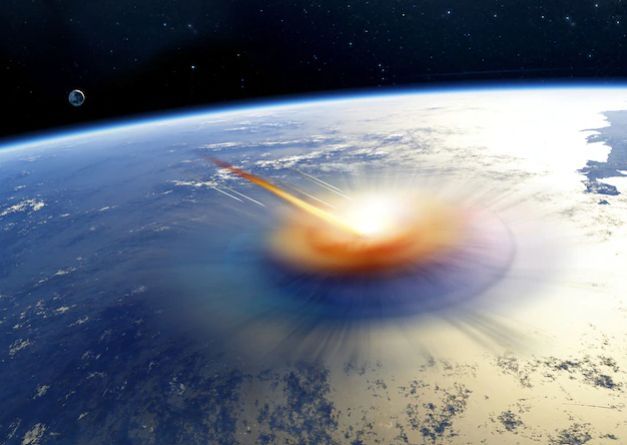
The dominant land animals on earth before the comet's arrival were
dinosaurs.3 Right up until that day, the future of the dinosaurs looked pretty
bright. They were at the top of the food chain, without equal, and there were
no signs of that changing.
We accomplished the extinction of other animal species through a
combination of hunting and turning half of the earth’s dry surface into farms.3
Of course, domesticated animals are a different story. Today, just a handful of
species - cattle, pigs, sheep, goats, and Homo sapiens - make up 97 percent of
the land animal biomass. Homo sapiens continues to exterminate other species,
except for those destined for our table. The current extinction rate for all
species is now more than 100 times higher than before. The global population of
vertebrates has declined by 52 percent from 1970 to 2010.4One-quarter of all
mammals and 10 percent of all plant species today are threatened with
extinction.4 All these species, including the other humans, have vanished into
the mists of history. The 99 percent of all species that once lived and are now
dead are not around to contemplate the prospects for their survival. At one
time, the future must have seemed bright for many of these now-extinct species.
If given to contemplating their fate, the dinosaurs were probably looking
forward to dominating the planet for many millions of years. Like us, they
might have expected to survive because they had always done so in the past. But
if a poll were taken of all species, the survivors and non-survivors, on
whether the earth is a hospitable place for life, about 99 percent would vote
no. The only ones likely to vote yes - the 1 percent - are those that happened
to survive.
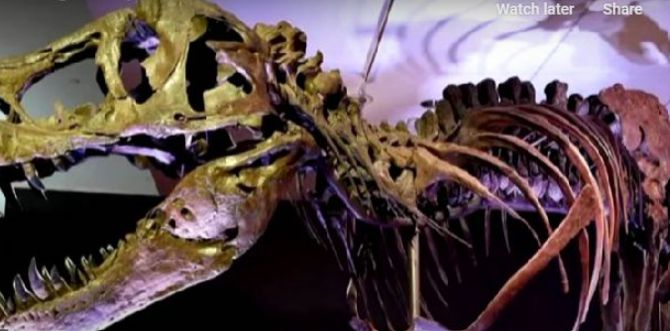
We are fortunate that a small comet passed by us in 1736. We are equally
lucky that a large one struck the earth 6 million years ago.
During the Cretaceous
Period, a comet six miles wide, taller than Mount Everest, and traveling at a
hundred times the jet plane's speed targeted the earth.5 The comet (or
asteroid; exactly which is still debated) entered the atmosphere, created a
vacuum that sucked up hundreds of millions of tons of dirt into the clouds, and
then smashed into the Yucatan Peninsula with the energy equivalent of a billion
atoms bombs, leaving a hole in the ground twenty-five miles deep and more than
one hundred miles wide. The resulting fires circled most of the planet, burning
forests and plant life, instantly roasting any animal in its path into charred
ash. Within minutes, the “ejecta” - liquefied rocks sent into the atmosphere
from what is now Mexico - rained down upon the planet, and a hail of lethal
projectiles shredded animals not previously incinerated into little pieces of
bone and flesh. The shock to the earth’s crust set off magnitude 12 earthquakes
around the globe that shallowed up parts of whole continents, ignited massive
volcanic eruptions that covered millions of square miles of land in molten
lava, and triggered tsunamis that flushed sea life hundreds of miles inland.
Ninety percent of the biomass of the earth was suddenly gone.6
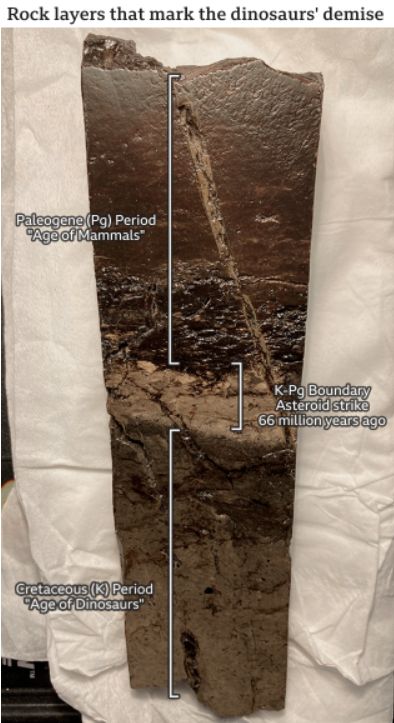
And then it got cold
The ejecta and dirt in the clouds smoke from planetary-scale forest
fires, and ash from volcanic eruptions blocked the sun’s rays. Global
temperatures may have plummeted as much as fifty degrees over land and
thirty-six degrees over the oceans. Less than 1 percent of sunlight reached the
planet's surface, halting photosynthesis. Many creatures still alive soon
starved to death on frozen landscapes.7 The earth had gone from fireball to
snowball.
Bad News for Dinosaurs:
Good News for Us
The dominant land animals on earth before the comet's arrival were
dinosaurs.8 They were at the top of the food chain, without equal and with no
signs of change.
We would not have made it if Homo sapiens had been alive when the comet
struck.9 But some animals did survive. A few tiny dinosaurs with wings were not
killed. Maybe they were nesting in caves on that fateful day, or flight allowed
them to scour the earth for food, such as seeds or the roasted animal carcasses
that littered the earth. These small, winged dinosaurs managed to find food and
evolved to become today’s birds. Many species of fish, protected by the vast,
deep oceans, also survived. And a few small mammals, about the size of rodents,
somehow lived through this global holocaust. The descendants of these rat-like
creatures would evolve to write books about dinosaurs and survivor bias.10
The king of the dinosaurs was Tyrannosaurus rex, or T. rex for short.
Some forty feet long, weighing seven or eight tons, T. rex was one of the
largest meat-eating animals ever to walk the face of the earth.11 Its skull was
five feet in length with eyes the size of grapefruits and a jawbone lined with
fifty or so knife-sharp teeth.12 Unlike us, T. rex could regrow broken teeth,
which was helpful given its table manners.13 The king of the dinosaurs
benefited from exceptional senses: binocular vision thirteen times better than
modern humans, and the ability to hear and smell other animals at great
distances.14 Above all, T. rex was thought to have been among the smartest
animals around at that time.15
When a large comet struck the earth, this was bad news for dinosaurs
but good news for us. Most believe that Homo sapiens could not have coexisted
with such carnivorous beasts. We probably would have been a tasty appetizer: a
tall, moderately sized, fleshy mammal who ran upright (easily spotted) and
could not run that fast (easily caught). We can be thankful our ancestors were
small, ground-hugging, sub-snack-sized rodents, not worth pursuing. Probably
our ancestors’ main concern was not to get accidentally stepped on. We have not
discovered any preserved T. rex or other dinosaur brains, so the best evidence
of intelligence is the encephalization quotient (EQ), the ratio of brain mass
to body size. As an indication of intelligence, EQ has drawbacks because the
size of the individual components of the brain is important. For example, the
size of the neocortex matters more than that of the limbic system as an
indicator of intelligence. Nevertheless, EQ is roughly correlated with IQ. T.
rex had an EQ of 2.0 to 2.4. That is about twice that of a dog, more than a
chimpanzee, and about one-third of a modern adult human.16
If T. rex had survived, we can only speculate how far another 65
million years of brain evolution would have taken their species. When humans
first evolved, our intelligence was about the same as that of T. rex. During
six million years of human evolution, our brain size has almost tripled: Our EQ
started at 2.5 and eventually rose to 5.8.1719, But T. rex would have had a
65-million-year head start on brain evolution. Even if Homo sapiens somehow
could have found a way to coexist with T. rex, it is unclear which would have
become the more intelligent and dominant species.
A Planet Better at
Preserving Fossils than Life
Sixty-five million years ago was not the first time most living
organisms on earth were exterminated. In fact, the space rock that killed the
large dinosaurs was the most recent of five mass extinctions, defined as events
in which most species on earth perished.
The “big five” mass extinctions and the percentage of species lost
were:
• Ordovician: 444 million years ago (mya), 86
percent
• Devonian: 375 mya, 75 percent
• Permian: 251 mya, 96 percent
• Triassic: 200 mya, 80 percent
• Cretaceous: 65 mya, 75 percent
We could not have survived if we had been around during any of those
five mass extinction events. We are fortunate not to have been alive during the
first 95 percent of the earth’s 4.5-billion-year history.
In particular, the Permian mass extinction, known as the Great Dying,
was a close call for all life on earth. A dramatic global rise in temperatures
due to volcanic eruptions dumping massive amounts of CO2 into the skies killed
almost every land species. Oceans turned acidic, burning through the gills and
shells of most sea life. If all life had ended, we don’t know how long it would
have taken for it to restart, if ever. Even if it had, we don’t know how much
time would have passed before life once again reached the Permian stage of evolution.
The evolutionary climb to the heights of Permian life took over four billion
years after the earth formed. Hence, life might not have restarted, or
evolution could have followed a different path. It is doubtful that any other
path would have taken the same millions of twists and turns that yielded. Homo
sapiens. We are lucky descendants of the fortunate small percentage of all
species that have survived these mass extinctions.
Homo sapiens has existed as a distinct species for more than 200,000 years.
Despite that, as demonstrated by DNA evidence, modern-day humans evolved from a
group of common ancestors who lived just seventy thousand years ago.17 After
numbering perhaps hundreds of thousands of individuals at one time, the number
of Homo sapiens fell to as low as several thousand individuals.18 Such a
substantial fall in numbers risked the extinction of our species: A population
of merely thousands provides insufficient genetic variation for natural
selection to adapt to environmental change and can lead to life-threatening
genetic deformities from inbreeding.
The causes of this “bottleneck” in the Homo sapiens population are
still debated. The most likely explanation is that during this time, a volcano,
whose caldera today is Lake Toba in Sumatra, Indonesia, erupted in the largest
explosion on earth in the past two million years.19 The Toba eruption spit ash
into the skies that blocked out the sun’s rays, cooling the planet for more
than a thousand years. However, some have argued that the impact on equatorial
Africa's climate, where most Homo sapiens lived, was not significant.20 Other
reasons for the population bottleneck could be that Homo sapiens were
outnumbered by other humans, such as the Neanderthals, and may have suffered
devastating attacks from these competing human species. Diseases could have
also played a role, but determining the presence of pathogens from ancient
skeletal remains is challenging. Or maybe it was some combination of all the
above. Regardless, Homo sapiens barely survived, passing through a tight
population bottleneck that could have easily led to our extinction.
As survivors, we tend to believe that the survival of our species was
likely, even inevitable. We are inclined to believe that the journey must not
have been perilous. That fails to account for survivor bias. The path that we
took might have been one of the few that did not.
What we do know is that most species don’t make it. Ninety-nine percent
of all species that once lived on the earth are gone.21 The vast majority of
species on our planet have lasted from one to ten million years.22 Mammals like
us are particularly vulnerable, surviving only about a million years on
average.23 Compared with many other species, humans have a larger mass, which
requires more energy when we hunt for food - and offers more food when hunted.
Our warm blood demands reliable nutrients to maintain a constant internal body
temperature. Our reproductive cycle has a high infant mortality rate (and
maternal mortality rate), and we birth helpless infants completely dependent on
adults for survival. These vulnerabilities are exacerbated by extended
adolescence and, therefore, a greater risk of death from predators. In
addition, lower birth rates constrain our ability to adapt to a changing world
through natural selection. Homo sapiens can procreate about once a year, but
cockroaches give birth monthly. Some bacteria divide into new cells every
twenty minutes.
The primary reason species don’t last because the earth’s physical
environment constantly changes. For all but a few species, the speed of that
change eventually outruns the pace of adaptation. Charles Darwin called this
series of adaptations “evolution,” which he defined as “descent with
modification.” But the earth’s physical environment changes faster than just
about any organism can adapt.24 Sometimes, the change in the environment is
gradual, such as an ice age, and other times sudden and violent, like a comet
strike, a massive earthquake, or a volcanic eruption.
In any case, the earth is better at preserving fossils than life.
Despite all this, Homo sapiens has survived and flourished. We dominate the
earth's landmasses, from soaring mountains freezing in the clouds to tropical
islands baking in the sun. We are the most intelligent species that has ever
lived, as complex, symbolic language gives us the amazing ability to share
knowledge with billions of fellow humans and pass on what we have learned to
subsequent generations. We may extend that domination to the planets whirling around
our sun in the next hundred years.
But our journey to today’s world was actually quite perilous. Some
fifty thousand years ago, at least five human species - Homo Denisova,
Homo Floresiensis, Homo Naledi, Homo Neanderthalensis, and Homo Sapiens - coexisted
on earth.25 Our species is the only survivor, the last humans.
Two Enter, One Leave
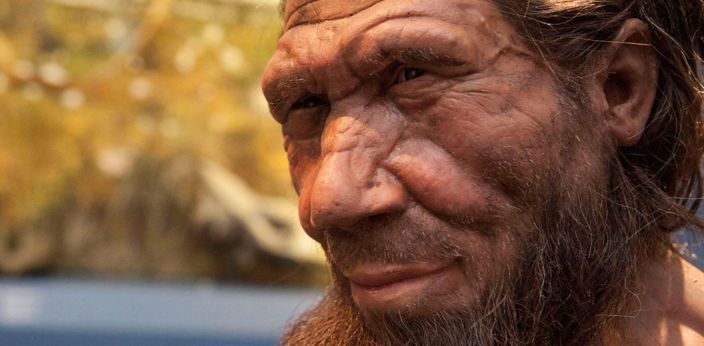
Homo sapiens first appeared in northern Africa around 200,000 BC, the
descendants of an early human species, Homo erectus. Sometime around 120,000
BC, Homo sapiens started trickling up into Europe, and then a large wave
migrated north about 50,000 BC. There, we encountered Homo
neanderthalensis, more commonly
known as the Neanderthals.
Neanderthals were the most dominant human species, outnumbering all
others combined.26 Neanderthals had left Africa much earlier, about 800,000 BC,
and moved up into Europe. By 400,000 BC, Neanderthals were spread throughout
Europe and Asia.
Named after the first specimen found in 1856 by miners in the Neander
Valley of Germany, Neanderthals shared many anatomical and cultural
characteristics of Homo sapiens. Neanderthals were comparable in height,
although much heavier in the body, with stronger and thicker arms and legs, a
protruding jaw, and a thick-walled skull that rode on top of broad shoulders.
Homo sapiens and Neanderthals were equally advanced. Neanderthal brains were as
large as those of Homo sapiens,27 and like Homo sapiens, Neanderthals had
language skills.3035 Both species shaped stone tools, crafted jewelry, painted
cave walls, buried their dead, and lived on comparable diets.3136 Although
physically imposing, Neanderthals in other respects were not that different
from modern Homo sapiens. It has been said that a Neanderthal on a New York
City subway would go unnoticed “provided that he was bathed, shaved, and
dressed in modern clothing.”28
Within thousands of years of Homo sapiens arriving in Europe,
Neanderthals died out, followed by the extinction of the other human species
around the globe.29 The cause of such a rapid extinction of all humans on earth
except for Homo sapiens is unknown. However, archaeologists have put forward
several explanations. The most commonly accepted theory is that we slaughtered
them, or what has become quaintly known as the Replacement Theory.30
As Homo sapiens moved into the Neanderthal territory, the frequency of
violent interactions likely increased. There are indications that Homo sapiens
had better language abilities than other human species. However, our language
skills at that time would still have been primitive and limited.31 Consistent
with an ability to better coordinate and communicate, Homo sapiens might have
been more cunning warriors. It appears many Neanderthal men met an unnatural
demise. Neanderthal male skeletal remains support this theory that evidence
skulls pierced by arrowheads or foreheads caved in by rocks. One survey of male
Neanderthal skeletons showed that 40 percent suffered traumatic head
injuries.32 There is also evidence of widespread cannibalism. Neanderthal
skulls were often broken in places that would facilitate the extraction of
juicy brain matter, and long bones were shattered in ways to ease the scooping
of moist bone marrow.35
Homo sapiens also bred with Neanderthals. DNA evidence confirms that
Homo sapiens carry genomes from Neanderthals that range from 1.5 percent in
Europeans to 2.1 percent in Asians.36 Homo sapiens men may have killed
Neanderthal men to access Neanderthal women.37 Given the small bands of
hunter-gatherers in which humans traveled at that time, interbreeding within a
group of forty or fifty individuals could produce genetic anomalies. Homo
sapiens men who reproduced with Neanderthal women gave their offspring an
evolutionary advantage.
An alternative explanation is that Homo sapiens were better hunters,
and eventually the Neanderthals starved to death. It is not clear why that
would be the case: Neanderthals were physically stronger and had established
themselves in Europe and Asia long before us. Another theory is we drove
Neanderthals to extinction because we domesticated wolves (today’s dogs) for
hunting and the Neanderthals didn’t.3840 It is difficult to know how important
dogs were to food gathering or keeping watch for predators. Still, it seems
unlikely that pets – even working pets – are mainly responsible for the
extinction of the Neanderthals. Yet another theory is that Homo sapiens
infected Neanderthals with lethal diseases we carried within us from Africa.
Because the Neanderthals left Africa hundreds of thousands of years before us, they
may have lost immunity to African pathogens.3941 This would be consistent with
other mass human genocides, such as when Europeans arrived in the New World.
However, particular diseases are difficult to detect in fossils, so there is no
direct evidence of the “disease out of Africa” theory.
Based on what is known recently, the extinction of the Neanderthals was
most likely due to Homo sapiens slaughtering Neanderthal men and capturing
Neanderthal women. With the Neanderthals out of the way, we could have readily
vanquished the remaining less-numerous human species employing a similar
strategy. However, the Neanderthals could have just as easily won this
interspecies battle for survival. In fact, given their vastly greater numbers
and far superior physical strength, Neanderthals probably were the odds-on
favorite. And then Neanderthals would have been the ones writing books about
those primitive, now-extinct Homo sapiens.
Furthermore, we did not just kill off other humans. After vanquishing
our nearest genetic kin, we exterminated many of our animal predators. We
hunted to extinction those whose meat we fancied.40
Originally, when Homo sapiens spread throughout the globe, large
animals, known as megafauna, roamed every continent. There is not enough space
in this book to list the animals we hunted to extinction, but some examples are
straight-tusked elephants, woolly mammoths, woolly rhinoceroses, giant deer,
cave bears, and cave lions in Eurasia; marsupial lions, giant kangaroos, a giant python, two species of
crocodiles, and all large flightless birds in Australia; mammoths, giant
elephants, giant sloths, giant armadillos, stag moose, mastodons, and the
American lion, which was larger than its African cousin in the New World.
Before Homo sapiens arrived, camels and zebras roamed the plains of North
America. For hundreds of thousands of years, horses thrived before we drove
them to extinction on the North American continent around 12,000 BC. (Today’s
horses were later reintroduced into the Americas by Spanish settlers in the
fifteenth century.)
By 10,000 BC, Homo sapiens had killed off 80 percent of big animal
species in the Americas, basically those large enough to be worth the meat.42
Some animals we didn’t hunt to extinction but dramatically reduced their
number, and then we put them in-game parks or zoos. Lions have declined from
450,000 to fewer than twenty thousand today, and there were once over one
million chimpanzees in Africa compared with an estimated 200,000 currently.44
The total mass of wild animals is now one-sixth of pre-human levels.43
We accomplished the extinction of other animal species through a
combination of hunting and turning half of the earth’s dry surface into farms.
Of course, domesticated animals are a different story. Today, just a handful of
species – cattle, pigs, sheep, goats, and Homo sapiens – make up 97 percent of
the land animal biomass.44 Homo sapiens continues to exterminate other species,
except for those destined for our table. The current extinction rate for all
species is now more than 100 times higher than before.45 The global population
of vertebrates has declined by 52 percent from 1970 to 2010. One-quarter of all
mammals and 10 percent of all plant species today are threatened with
extinction.46 All these species, including the other humans, have vanished into
the mists of history. The 99 percent of all species that once lived and are now
dead are not around to contemplate the prospects for their survival. At one
time the future must have seemed bright for many of these now-extinct species.
If given to contemplating their fate, the dinosaurs were probably looking
forward to dominating the planet for many millions of years. Like us, they
might have expected to survive because they had always done so in the past. But
if a poll were taken of all species, the survivors and non-survivors, on
whether the earth is a hospitable place for life, about 99 percent would vote
no. The only ones likely to vote yes – the 1 percent – are those that happened
to survive.
Our future survival
may not be as favorable as they seem
Our journey as a species to reach the present day has been fraught with
many dangers. We have come close to extinction numerous times, like most
species borne on this planet. If Homo sapiens had evolved before the last 65
million years of the earth’s 4.5-billion-year history, we would not have
survived any of the mass extinctions. Since then, threats to our survival have
come in the form of periodic ice ages and global warmings, as our planet has
tried to freeze or boil us to death alternately. About seventy thousand years
ago we barely squeezed through a population bottleneck. Some fifty thousand
years ago we battled with the dominant human species on the planet and somehow
lived to tell the tale.
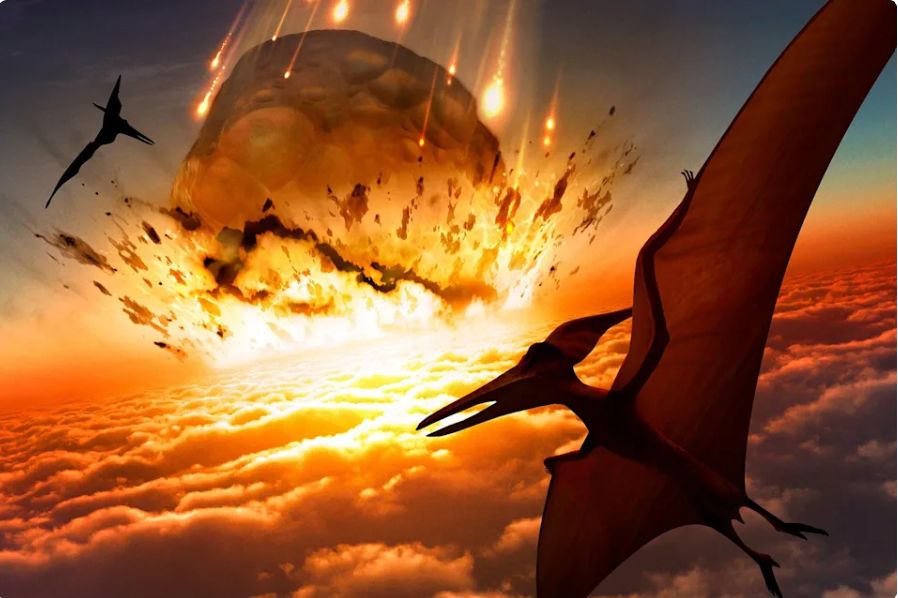
Therefore, we should be cautious about becoming overly optimistic about
our future. If the past is prologue, then the odds of future survival may not
be as favorable as they seem. The journey ahead may present just as many, or
even more, opportunities to take a wrong turn, leading to joining the other 99
percent of species that are now extinct.
But that is not the perspective most of us have about our evolutionary
history. We somehow survived all these threats to our survival in the past and
therefore believe we will somehow continue to do so in the future.47 But this
is just an example of survivor bias. Our perspective on our evolutionary
history is distorted because we are one of the few species that made it. The
species that didn’t would have a different view. We can be easily fooled when
we are one of the few winners. Even though our evolutionary journey to the
present day was perilous, many argue that the road ahead presents significantly
fewer dangers. After all, Homo sapiens currently rule the planet. We have wiped
out or put in zoos any species that threatened us. We have developed powerful
technologies to bend the physical world to our will and enjoy a standard of
living hundreds of times greater than our hunter-gatherer ancestors. To mention
two nuclear war and global warming, the extinction risks for Homo
sapiens are greater than ever.
About seventy-five years ago, we placed in the hands of a few the
ability to exterminate billions with atom bombs. Around the same time, we spew
large amounts of CO2 into the atmosphere, which could someday trigger a runaway
greenhouse effect that fries all life on earth to a crisp. I will argue that
these new existential threats put us at greater risk of extinction than ever
since we battled for survival with the Neanderthals fifty thousand years
ago.
The above-mentioned dangers
were predicted sixty-five years ago by a Hungarian immigrant to the United
States. The man who saw this clearly during the 1950s, both the upsides and
downsides of technology, worked at the Institute for Advanced Studies at
Princeton and was a friend of Abraham Wald. This professor cautioned that new
technologies have unforeseen consequences. In 1955, as he lay dying of cancer
near the end of his life, this professor wrote an essay in Fortune that laid
out his concerns. He foresaw much of what would happen in the years to come,
including the proliferation of nuclear weapons and global warming. His essay
was entitled “Can
We Survive Technology?”
1. David Graeber and
David WengrowThe Dawn of Everything: A New
History of Humanity.2021, p. 504.
2. Brusatte, Steve. (2018). The Rise and Fall of the
Dinosaurs. Harper Collins. New York, p. 204.
3. Brannen,
Peter. (2017). The Ends of the World. HarperCollins. New York.. p. 238.
4. Walsh, Bryan.
(2019). End Times. Hachette Books. New York, p. 149.
5. Christian, David.
(2011). Maps of Time. University of California Press. Berkeley,
California, p. 142.
6. Descriptions of
the effects of the comet or asteroid are a combination of Brusatte (2018), p. 314–315 and Brannen.
7. Walsh,
Bryan (2019), p. 17.
8.The descriptions
of dinosaurs come from Brusatte (2018).
9. Brusatte (2018), p. 336.
10. Brusatte (2018), p. 338.
11. Brusatte (2018), p. 198.
12. Brusatte (2018), p. 200.
13. Brusatte (2018), p. 204.
14. Brusatte (2018), p. 220.
15. Brusatte (2018), p. 219.
16. Everett, Daniel.
(2017). How Language Began: The Story of Humanity’s Greatest Invention.
Liveright Books. New York,p. 126.
17. Finlayson,
Clive. (2010). The Humans Who Went Extinct. Oxford University Press. Oxford,
UK, p. 99.
18. Hawks, John
et al. (2000). “Population Bottlenecks and Pleistocene Human Evolution.”
Molecular Biology and Evolution. January 1, 2000. Vol. 17. No. 1,p. 9.
19. Finlayson
(2010), p. 99.
20. Yost, Chad et al.
(2018). “Subdecadal Phytolith and Charcoal
Records from ~74ka Toba Supereruption.” Journal
of Human Evolution. March 2018. Vol. 116. p. 75–94.
21. Pinker, Steven.
(2019). Enlightenment Now. Penguin Books. New York, p. 294.
22. Sterns, Beverly
et al. (2000). Watching from the Edge of Extinction. Yale University Press. New
Haven, CT, p. x.
23. Pinker (2019),
p. 294.
24. Bertram (2016)
provides a model to quantify this qualitative statement.
25. Scanes, Colin. (2018). Animals and Human Society. Academic
Press, Elsevier. London, p. 84.
26. Papagianni, Dimitra. (2015). The Neanderthals Rediscovered.
Thames & Hudson. London, p. 21.
27. Lee, Sang-Hee. (2015). Close Encounters with Humankind. W.W. Norton.
New York, p. 176.
28. Lee (2015), p.
184.
29. Papagianni (2015), p. 13.
30. Reich, David.
(2018). Who We Are and How We Got Here. Pantheon Books. New York, p.
26.
31. Diamond, Jared.
(1999). Guns, Germs, and Steel. W.W. Norton. New York, p. 28, and Reich
(2018), p. 28.
32. Harari, Yuval. (2015).
Sapiens. HarperCollins. New York, p. 145, p. 145.
33. Christian
(2011), p. 175.
34. Keeley, Lawrence.
(1996). War before Civilization. Oxford University Press. Oxford, UK, p. 37.
35. LeBlanc, Steven.
(2003). Constant Battles: Why We Fight. St. Martin’s Press. New York, p. 97.
36. Reich (2018), p.
40.
37. Stringer, Chris.
(2012). Lone Survivors. Times Books. New York.
38. Shipman, Pat.
(2015). The Invaders: How Humans and Their Dogs Drove Neanderthals to
Extinction. Belknap Press. Cambridge, MA.
39. Stringer (2012),
p. 204, Money, Nicholas. (2019). The Selfish Ape. Reaktion Books.
London, p. 70.
40. Brannen (2017),
p. 226–233 for the species humans have driven to extinction.
41. Diamond (1999),
p. 204.
42. Brannen (2017),
p. 240.
43. Money (2019), p.
97.
44. Brannen (2017),
p. 238.
45. Walsh, Bryan.
(2019). End Times. Hachette Books. New York, p. 149.
46. Christian
(2011), p. 142.
47. Like a cat
perched on the windowsill of a high-rise apartment building, we believe our
survival is not at risk. “After all,” the cat may say to itself, “I have rested
outside this open window for many years, peering down at the street fifty
stories below, and nothing bad has happened.” Unfortunately, cats who fell to
their death are not around to reconsider whether a narrow ledge 600 feet above
ground level is the best place to nap.
For updates click hompage here